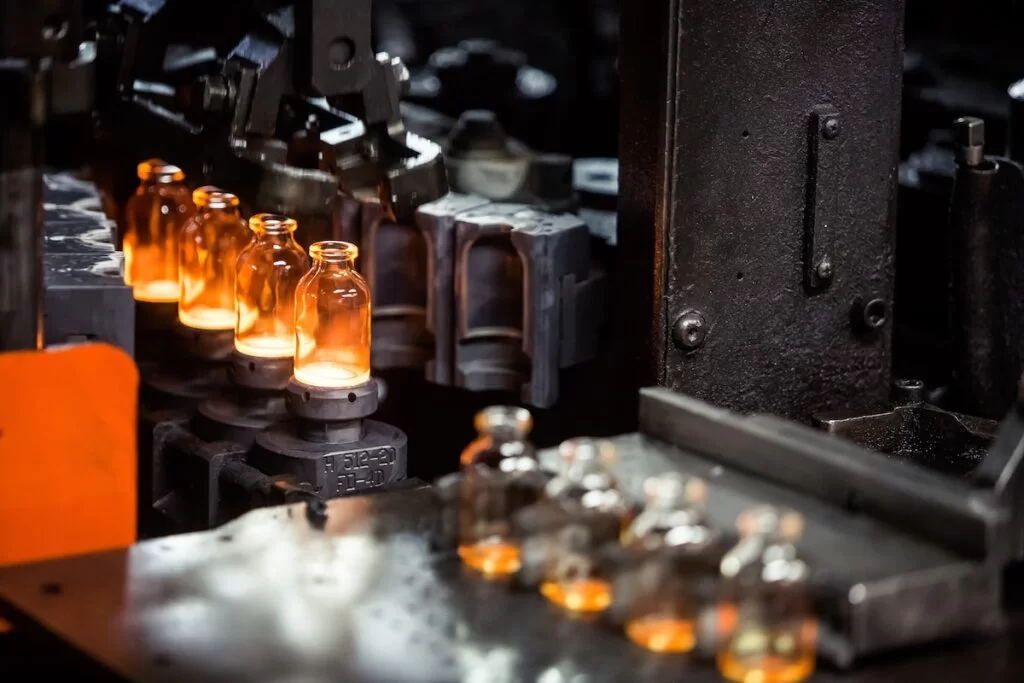Process glass bottle hot coating is carried out after bottle forming and before annealing treatment. When the process glass bottle is slowly cooled to 500 ~ 600℃, the metal coating agent is sprayed on the surface of the container to form a protective film of a certain thickness, which enhances the surface strength of about 30%, and can make the bottle withstand long-term water washing and washing.
Organic polysiloxane hydrophobic film and polymerization (Si02) can be formed by using silicone evaporation coating or impregnation with silicone on the glass surface. A silicon film connected to a glass surface by a common silicon bond. After heat treatment, the organic groups will be volatilized and the remaining silicon oxide film can be filled in the crack, and the hydrophobicity can avoid the diffusion of the active medium in the crack and the surface crack is healed, not only the strength and chemical stability of the glass are improved, but also the glass has special optical properties and impact resistance.
The frost is sprayed with carbon tetrachloride during the cooling process of the glass bottle, or sulfur dioxide in the annealing furnace, both of which can react with alkaline oxides on the surface of the bottle, so that the sodium ions on the surface of the glass are precipitated to form mirbulite particles (that is, Na2S04 in turbidized powder), and after being washed away with water, the chemical stability of the surface is enhanced due to the reduction of alkali.
Commonly used silicone solutions are methyl fluorosilane, dimethyl dichlorosilane, diphenyl difluorosilane and phenyl trichlorosilane.

